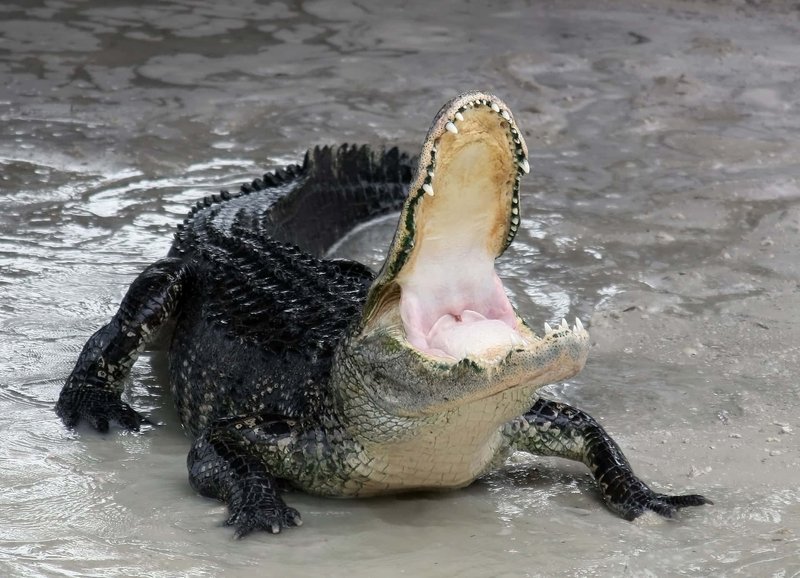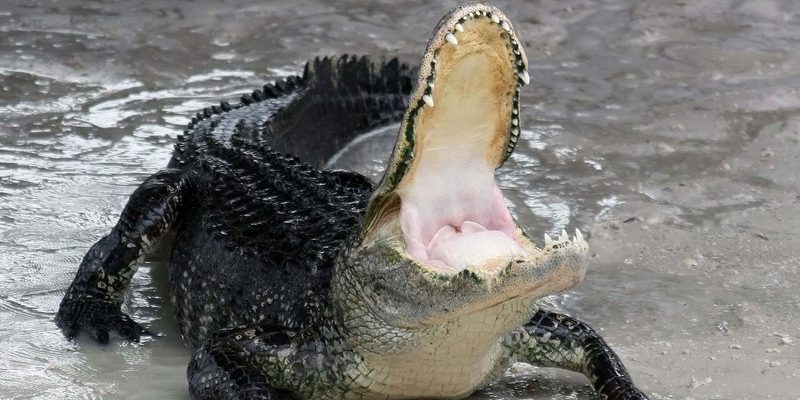
So how do these fascinating reptiles manage to live in such harsh environments? Well, it all comes down to their unique adaptations and behaviors. From their tough skin to their ability to regulate their body temperature, alligators have some pretty nifty tricks up their sleeves. Grab a cup of coffee, and let’s dive into the incredible world of alligator survival!
Adaptations to Harsh Environments
Alligators are built to endure extreme conditions, and it starts with their robust physical features. Their tough, scaly skin not only protects them from predators but also helps them retain moisture. Imagine wearing armor that keeps you dry while swimming through murky waters. This skin is covered in keratin, the same stuff that makes up our fingernails, giving them a durable exterior.
Another fascinating aspect is their camouflage. When basking in the sun or lying still on the bank, alligators blend seamlessly into their surroundings. It’s as though they have a built-in stealth mode! This natural disguise allows them to surprise unsuspecting prey, making it easier for them to hunt without expending too much energy.
Alligators can also go without food for months when necessary. Picture a person on a tight budget, stretching every meal to make it last. Alligators can slow their metabolism, relying on fat reserves during lean times. This ability to adapt their eating habits helps them survive when food is scarce, especially in harsher seasons or droughts.
Temperature Regulation: Nature’s Thermostat
You might be wondering, how do alligators handle extreme temperatures, especially the scorching heat of summer or the chilly winter months? Here’s the thing: alligators are ectothermic, meaning they rely on their environment to regulate their body temperature. This is different from mammals, which are warm-blooded and can maintain their body heat.
During hot days, you’ll often see alligators basking in the sun. They do this to warm up because they need the heat to fuel their digestive system and overall activity. If it gets too hot, they can dive into the water to cool off, much like how we’d jump into a pool on a sweltering afternoon.
In winter, alligators engage in a behavior called brumation, similar to hibernation. They find deep areas in the water or burrows where they stay inactive and conserve energy. By slowing their metabolism, they can withstand colder temperatures without needing to eat much. This strategy is vital for surviving in regions where temperatures can drop significantly.
Water Sources: Mastering Brackish and Freshwater
Alligators are quite the water connoisseurs. They can thrive in both freshwater and brackish environments, which makes them incredibly versatile. This ability to tolerate varying salinity levels sets them apart from many other reptiles.
When faced with droughts or low water levels, alligators can still survive by traveling to find suitable habitats. They might venture into nearby swamps or rivers, showcasing their adaptability to changing conditions. Think of them as environmental explorers, always searching for the best spot to call home.
In areas where water becomes too scarce, alligators can even dig holes to access underground water sources. These holes, called gator holes, can provide refuge for themselves and other wildlife during dry spells. It’s a brilliant example of how alligators don’t just survive—they also create opportunities for other species.
Feeding Strategies: Opportunistic Predators
When it comes to feeding, alligators are opportunistic predators. This means they eat whatever is available, ranging from fish and birds to small mammals. They have incredibly strong jaws, capable of exerting immense pressure to crush bones and shells. You could say they’re nature’s all-you-can-eat buffet lovers!
Alligators also employ a tactic called the death roll when catching prey. This spinning maneuver helps them disorient and tear apart their meals. Picture it like a washing machine; it’s a powerful spin cycle that makes sure they get a good meal!
Another noteworthy aspect is their hunting strategy. Alligators often lie in wait, partially submerged with just their eyes and nostrils above water. When an unsuspecting animal comes near, they strike swiftly, showcasing their patience and precision. It’s a delicate dance of stillness followed by explosive action.
Social Behavior: Family and Territory
Despite their reputation as solitary creatures, alligators have interesting social behaviors. During mating season, male alligators become quite vocal, using a series of grunts and bellows to attract females. It’s like a serenade in the swamp, showcasing their strength and readiness to mate.
Once they mate, females are fiercely protective of their nests. They build nests using reeds and vegetation and lay anywhere from 20 to 50 eggs. After the eggs hatch, the mother provides care and protection for the young. This nurturing aspect is pretty remarkable for a species often seen as a ruthless predator.
Territorial disputes can arise, especially among males. They’ll establish dominance through displays of strength, which can sometimes lead to confrontations. But generally, alligators prefer to avoid conflict when possible, focusing on survival—with a touch of social structure.
The Role of Alligators in the Ecosystem
Alligators play a crucial role in their ecosystems, acting as a keystone species. This means their presence helps maintain the balance of their environment. By controlling the populations of various prey species, they help prevent overgrazing and maintain a diverse ecosystem.
Their gator holes also benefit other species by creating wetland habitats. When these holes fill with water, they become breeding grounds for fish and amphibians, supporting a vibrant food web. In this way, alligators don’t just survive—they contribute to the survival of many other organisms.
Even their hunting habits have indirect benefits. By preying on weak or sick animals, alligators help maintain healthy populations of prey species. It’s like nature’s way of ensuring that ecosystems stay balanced and thriving.
In a way, alligators are like unsung heroes of the wetlands, quietly playing their part in the circle of life.
Alligators are nothing short of remarkable when it comes to survival in harsh environments. With their tough adaptations, temperature regulation strategies, unique feeding habits, and vital role in the ecosystem, they offer a fascinating glimpse into nature’s ingenuity.
Next time you think about alligators, remember that they’re not just fearsome predators; they are resilient survivors who remind us of the beauty and complexity of life in challenging environments. Whether you’re exploring a swamp or just reading about these ancient reptiles, their story is a captivating one that highlights the wonders of nature.

